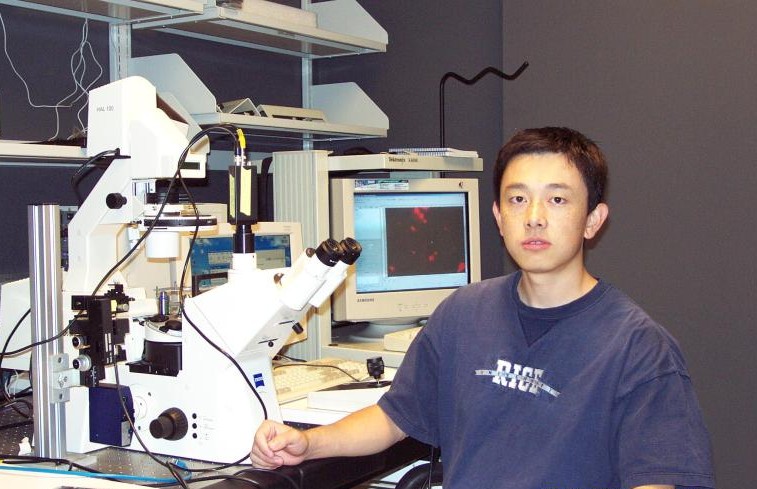YONG zHOU
B.S. Chemistry
Sam Houston State University - Huntsville, TX
August 1997

|
YONG zHOU
B.S. Chemistry Sam Houston State University - Huntsville, TX August 1997
|
|
NSAIDs and Membrane Mechanics
There is a bark of an English tree, which I have found by experience to be a powerful astringent, and very efficacious in curing aguish and intermitting disorders.
----The Rev. Mr. Edmund Stone of Chipping-Norton in Oxfordshire, in a letter to the Right Honourable George, Earl of Macclesfield, President of the Royal Society, April 25, 1763
The English tree Mr. Stone talked about in his letter contains salicylates whose derivative, acetylsalicylate, is the major ingredient of aspirin. Depending on the dosage, aspirin can either reduce the chance of heart attack, pain, fever, arthritis, or even Alzheimer’s disease according to recent studies. Aspirin along with other drugs that have similar effects (collectively called nonsteroidal anti-inflammatory drugs, or NSAIDs) has been one of most widely used nonprescription painkillers in the world. With its power come the side effects. One of major side effects of taking aspirin is reversible hearing loss when taking high dosage of it. Back in the 1970’s Sr. John Vane first discovered a major mechanism for aspirin action. Vane found that salicylate functions to inhibit prostaglandin synthesis by binding to cyclooxygenase (COX). However this mechanism is not able to explain the whole range of actions that salicylate is able to take. Another mechanism of salicylate action in addition to the one proposed by Vane is that salicylate alters cell membrane properties. My focus is to investigate How NSAIDs affect cell membrane mechanics.
Using the technique of micropipette aspiration, Dr. Raphael has discovered that salicylate, the metabolite of aspirin, softens lipid membranes. This effect may explain side effects of aspirin ingestion not attribution to the inhibition of cyclooxygenase, such as ototoxicity. We have also found that inclusion of salicylate into PC vesicles caused surface protrusion via epifluorescence within 5 minutes of exposure to it. In addition, long tubular structures of several hundred nanometers were observed after 20 minutes, which implies a change in spontaneous curvature of the membrane containing salicylate. So the hypothesis is that salicylate interacts with the lipid component of the membrane resulting in changes in membrane mechanics. Tests proposed involve aspiration of vesicles in salicylate and other NSAIDs.
The computational and molecular models are being developed to understand the temporal features of these effects. The project illustrates how surfactant and interfacial science are germane to bioengineering problems and how mechanochemical coupling can influence biological processes. In addition, aspirin-induced softening of cell membranes can be used as a modulator of membrane function.